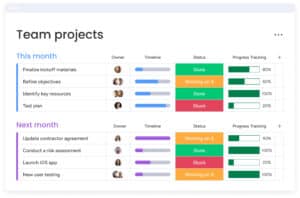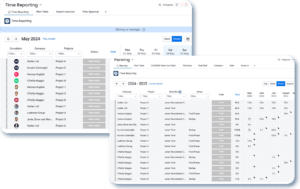Introduction
In today’s fast-paced business world, the quest for efficiency and productivity leads many companies to embrace technology solutions. At the forefront of this digital transformation is Business Process Automation (BPA). However, as organizations increasingly invest in automating their operations, a critical question arises in evaluating the ROI of business process automation investments. This query isn’t just about crunching numbers. It’s about understanding the impact of BPA on overall business performance and long-term sustainability.
In this article, we delve into the intricate world of BPA, demystifying the concept for those new to the term and providing deeper insights for those already familiar. We’ll explore the critical importance of evaluating ROI in business process automation investments. This not only to justify the costs involved but also to strategically guide future technology decisions. From defining ROI in the context of automation to exploring practical methods for its calculation, this post aims to equip you with the knowledge and tools necessary to make informed decisions about your BPA investments.
As we journey through the various aspects of BPA and ROI evaluation, we’ll continually revisit the central theme: ensuring that your investment in automation is not just a cost but a strategic move that propels your business forward. So, whether you’re a C-level executive pondering over the fiscal aspects of digital initiatives, an IT professional tasked with implementing automation strategies, or a curious reader eager to understand the intersection of technology and business strategy, this article aims to shed light on the vital process of evaluating ROI of business process automation investments.
Stay tuned as we unravel the complexities of BPA ROI. We’ll provide you with a roadmap to not only understand but master the art of smart, ROI-driven automation investments.
Understanding Business Process Automation
In the realm of business efficiency and innovation, Business Process Automation (BPA) stands as a cornerstone. But what exactly does this term entail? In essence, BPA involves the use of technology to execute recurring tasks or processes in a business where manual effort can be replaced. This is done to increase efficiency, reduce costs, and streamline operations.
BPA is not a one-size-fits-all solution; it varies greatly depending on the industry and specific business needs. From automating customer service responses in a call centre to streamlining inventory management in a warehouse, BPA can take many forms. The key lies in identifying repetitive, time-consuming tasks that can be automated to free up valuable human resources for more strategic activities.
As we delve deeper into evaluating the ROI of business process automation investments, understanding these nuances becomes crucial. It’s not just about automation for the sake of automation but about strategic, ROI-driven automation.
The Evolution of BPA: From Simple Tasks to Complex Operations
The journey of BPA is one of constant evolution. Initially, BPA was focused on automating simple, standalone tasks. However, as technology has advanced, so has the scope of BPA. Today, it encompasses complex workflows and processes, integrating with various aspects of business operations.
This evolution is significant when considering the ROI of business process automation investments. Early BPA implementations might have brought modest efficiency gains, but modern BPA solutions are transformative. They drive significant improvements in productivity, accuracy, and even employee satisfaction.
Omnitas Newsletter
Sign up for our monthly newsletter to stay up-to-date on our latest blog articles, videos and events!
Thank you!
You have successfully joined our subscriber list.
The Importance of ROI in Business Process Automation
Understanding the return on investment (ROI) in Business Process Automation (BPA) is not just a financial imperative. It’s a strategic necessity. In a landscape where digital transformation initiatives are abundant, measuring the ROI of business process automation investments becomes pivotal in justifying the expenditure and aligning it with business goals.
ROI in BPA is more than a mere calculation of financial return. It encompasses a broader view, considering improvements in efficiency, employee satisfaction, customer experience, and even market competitiveness. These factors contribute to the overall health and growth trajectory of a business, making ROI an indispensable metric in evaluating the success of automation initiatives.
In this light, ROI is not only about ‘what we gain’ in terms of financial returns but also ‘what we save’ in terms of time, resources, and opportunity costs. Effective evaluation of ROI in BPA ensures that businesses are not blindly investing in technology but are making informed decisions that contribute to their long-term success.
Balancing Cost and Value in Automation
Central to understanding the ROI of business process automation investments is the balance between cost and value. The costs of BPA include not only the initial investment in technology but also ongoing expenses such as maintenance, upgrades, and training. On the other side of the scale is the value derived from automation – increased efficiency, accuracy, and speed of business processes, along with qualitative benefits like improved customer satisfaction and employee engagement.
To accurately gauge ROI, businesses must assess both tangible and intangible benefits. For instance, while cost savings and revenue growth are quantifiable, improvements in customer loyalty and brand reputation, though harder to measure, are equally important. This holistic approach ensures a comprehensive understanding of the impact of BPA investments.
Challenges in Measuring the ROI of Business Process Automation
Evaluating the ROI of business process automation investments is a complex task, fraught with various challenges that businesses must navigate. Understanding these challenges is crucial to developing effective strategies for accurate ROI assessment.
Quantifying Intangible Benefits
One of the primary challenges in measuring the ROI of BPA is the quantification of intangible benefits. While tangible benefits like cost savings and revenue increases are relatively straightforward to calculate, intangible benefits such as improved customer satisfaction, enhanced brand reputation, or increased employee morale are less tangible and harder to quantify. Businesses need to establish metrics that can indirectly measure these intangible benefits, such as customer retention rates or employee turnover rates, to get a more comprehensive understanding of the ROI.
Accounting for Implementation and Maintenance Costs
Another significant challenge is fully accounting for all costs associated with BPA. This includes not just the initial implementation costs, but also ongoing expenses such as system maintenance, updates, and employee training. These costs can vary over time and may not be apparent at the outset of an automation project. A thorough cost analysis that accounts for these long-term expenditures is essential for an accurate ROI calculation.
Adapting to Changing Business Environments
The dynamic nature of business environments also poses a challenge in measuring ROI. BPA solutions implemented today might need to evolve to meet the changing needs of a business. This means that the ROI of BPA must be evaluated in the context of its flexibility and adaptability to changing business processes and environments. An automation solution that offers high ROI under current conditions but lacks scalability or adaptability may not deliver the same value in the future.
Aligning BPA Goals with Business Objectives
Finally, aligning the goals of BPA with overall business objectives is crucial. Sometimes, there’s a disconnect between what the BPA initiative aims to achieve and the strategic goals of the company. Ensuring that the BPA efforts are closely aligned with the broader business goals and strategies is essential for realizing a meaningful ROI.

Enhancing ROI with Strategic Automation Tools
To maximize the ROI of business process automation investments, selecting and utilizing strategic automation tools is key. Tools like monday.com and Make stand out in this regard, offering robust and versatile solutions that cater to various business needs.
Leveraging monday.com for Comprehensive Workflow Management
monday.com is a versatile platform that enables businesses to streamline and automate complex workflows. Its ability to integrate with a wide range of systems and applications makes it an invaluable tool for enhancing the ROI of business process automation investments. By providing a centralized platform for managing tasks, projects, and team collaboration, monday.com not only simplifies operational complexities but also significantly improves efficiency and productivity. These improvements are directly measurable in terms of time saved and errors reduced, contributing positively to the ROI.
Automating Processes with Make
Make, known for its flexibility and ease of use, is another powerful tool in the realm of business process automation. Its primary strength lies in connecting various apps and services to automate workflows, thereby eliminating manual tasks and streamlining operations. With Make, businesses can create custom automation flows that fit their specific requirements, leading to improved efficiency and accuracy. The impact of using Make on ROI is evident in the reduced need for manual intervention, faster completion of tasks, and the ability to scale operations without proportional increases in costs or resources.
Conclusion
In the journey to digital transformation, evaluating the ROI of business process automation investments stands as a critical step for any organization. As we’ve explored, the path to effective BPA is fraught with challenges but also rich with opportunities. Tools like monday.com and Make have shown their capability to not only simplify complex workflows but also to significantly boost ROI when used strategically.
Businesses must remember that the true value of BPA lies not only in the immediate efficiency gains but also in the long-term strategic advantages it brings. By automating mundane tasks, companies free up their most valuable resource – human creativity and intellect – for more complex and innovative tasks. This shift not only drives business growth but also fosters a more engaged and satisfied workforce.
As we conclude, it’s important to acknowledge that every business is unique, and so are its automation needs. The success of BPA lies in carefully selecting tools and strategies that align with your specific business objectives and requirements. This is where the expertise and experience of seasoned professionals become invaluable.
Leverage monday.com and Make for Your BPA
Interested in discovering how you can leverage monday.com and Make for your business process automation? Omnitas is here to guide you through every step of the way. Our team of experts is adept at identifying the right automation strategies tailored to your unique business needs, ensuring you get the most out of your investment.
Don’t let the complexities of BPA overwhelm you. Reach out to us to book a free consultation below. Together, we’ll explore how these powerful tools can transform your business processes, drive efficiency, and ultimately enhance your ROI.
If you found this blog post useful, make sure to sign up for our monthly newsletter below. Stay in the loop regarding all things business efficiency!
























